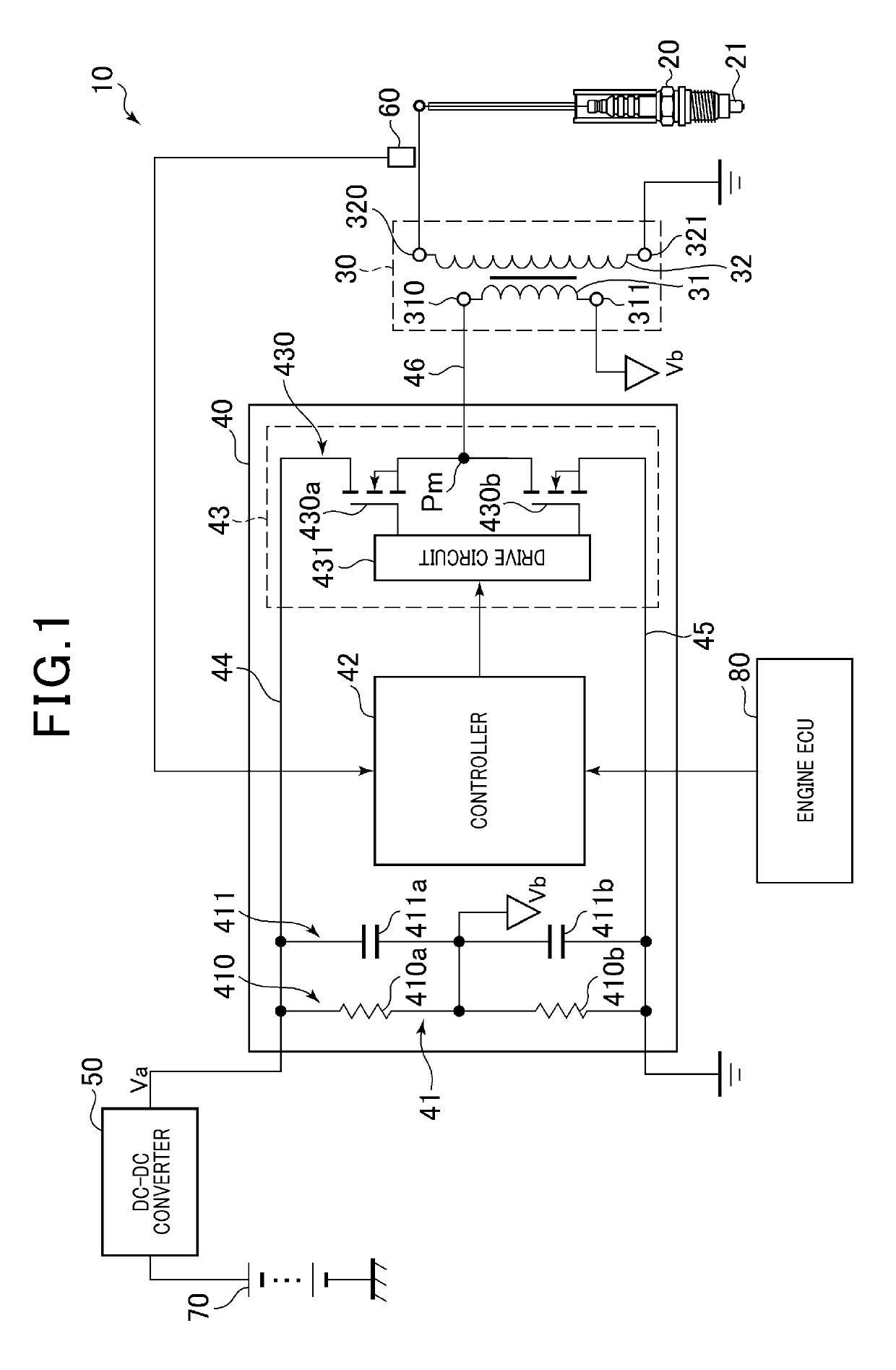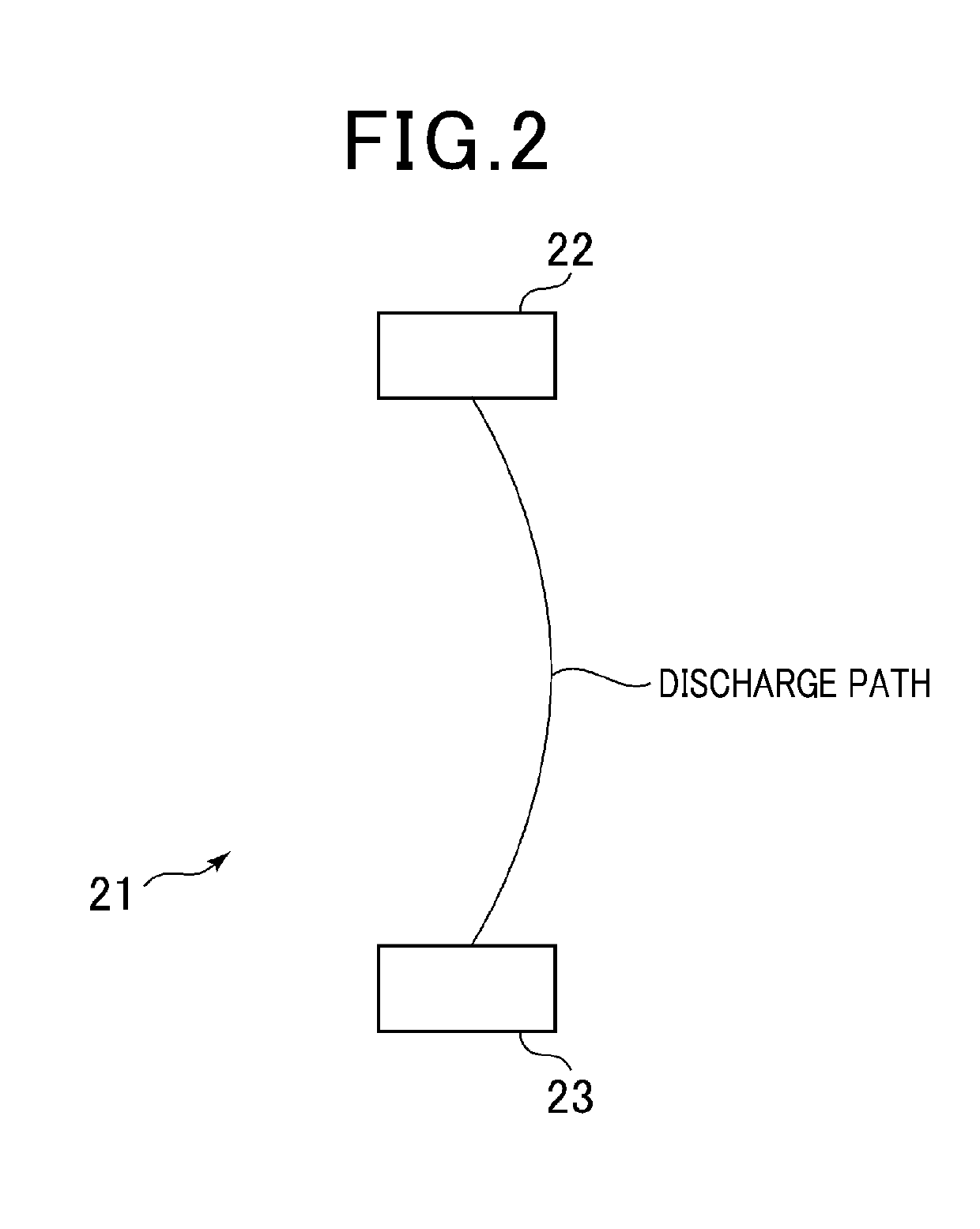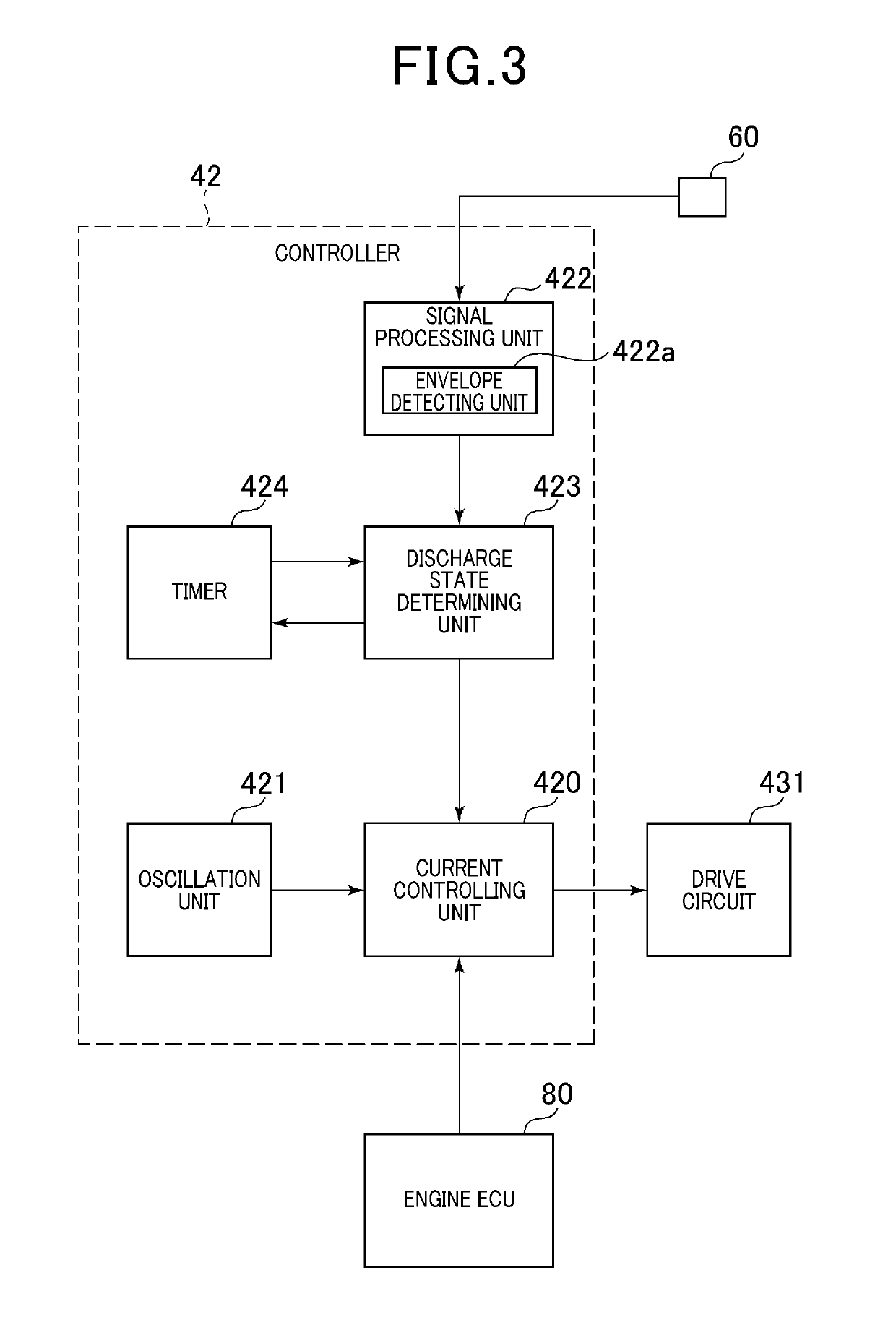Ignition apparatus
a technology of ignition apparatus and discharge path, which is applied in the direction of spark gap circuit, automatic control of ignition, machines/engines, etc., can solve the problems of variable output torque of the engine, variable discharge path length, and constant discharge of the discharged spark, so as to reduce the drive current of the ignition plug, shorten the discharge path, and increase the impedance of the discharge
- Summary
- Abstract
- Description
- Claims
- Application Information
AI Technical Summary
Benefits of technology
Problems solved by technology
Method used
Image
Examples
first modification
[First Modification]
[0103]In this modification, as shown in FIG. 7, after step S13, the process performed by the controller 42 directly proceeds to step S22, omitting step S20 (see FIG. 4) described in the above embodiment. Moreover, if the determination at step S12 produces a “NO” answer, the process directly proceeds to step S19, omitting steps S14-S18 (see FIG. 4) described in the above embodiment.
second modification
[Second Modification]
[0104]In this modification, at steps S13, S16 and S18 of the process described in the above embodiment with reference to FIG. 4, the AC current supplied to the primary coil 31 of the boost transformer 30 is adjusted by varying, instead of the voltage duty ratio, the frequency of the AC voltage applied by the ignition power source 40 to the primary coil 31 of the boost transformer 30.
[0105]Specifically, in this modification, as shown in FIG. 8, the controller 42 includes, instead of the oscillation unit 421 described in the above embodiment with reference to FIG. 3, a variable oscillation unit 421 that is capable of varying the frequency of a carrier signal generated by it and outputted from it to the current controlling unit 420. The discharge state determining unit 423 outputs a frequency increase command signal or a frequency reduction command signal to the variable oscillation unit 421, thereby causing the variable oscillation unit 421 to raise or lower the f...
third modification
[Third Modification]
[0106]In this modification, at steps S13, S16 and S18 of the process described in the above embodiment with reference to FIG. 4, the AC current supplied to the primary coil 31 of the boost transformer 30 is adjusted by varying, instead of the voltage duty ratio, the DC voltage applied by the DC-DC converter 50 to the ignition power source 40.
[0107]Specifically, in this modification, as shown in FIG. 9, the discharge state determining unit 423 outputs a voltage increase command signal or a voltage reduction command signal to the DC-DC converter 50, thereby causing the DC-DC converter 50 to raise or lower the DC voltage applied to the ignition power source 40.
PUM
| Property | Measurement | Unit |
|---|---|---|
| DC voltage | aaaaa | aaaaa |
| frequency | aaaaa | aaaaa |
| discharge-sustaining voltage | aaaaa | aaaaa |
Abstract
Description
Claims
Application Information
 Login to View More
Login to View More - R&D
- Intellectual Property
- Life Sciences
- Materials
- Tech Scout
- Unparalleled Data Quality
- Higher Quality Content
- 60% Fewer Hallucinations
Browse by: Latest US Patents, China's latest patents, Technical Efficacy Thesaurus, Application Domain, Technology Topic, Popular Technical Reports.
© 2025 PatSnap. All rights reserved.Legal|Privacy policy|Modern Slavery Act Transparency Statement|Sitemap|About US| Contact US: help@patsnap.com



